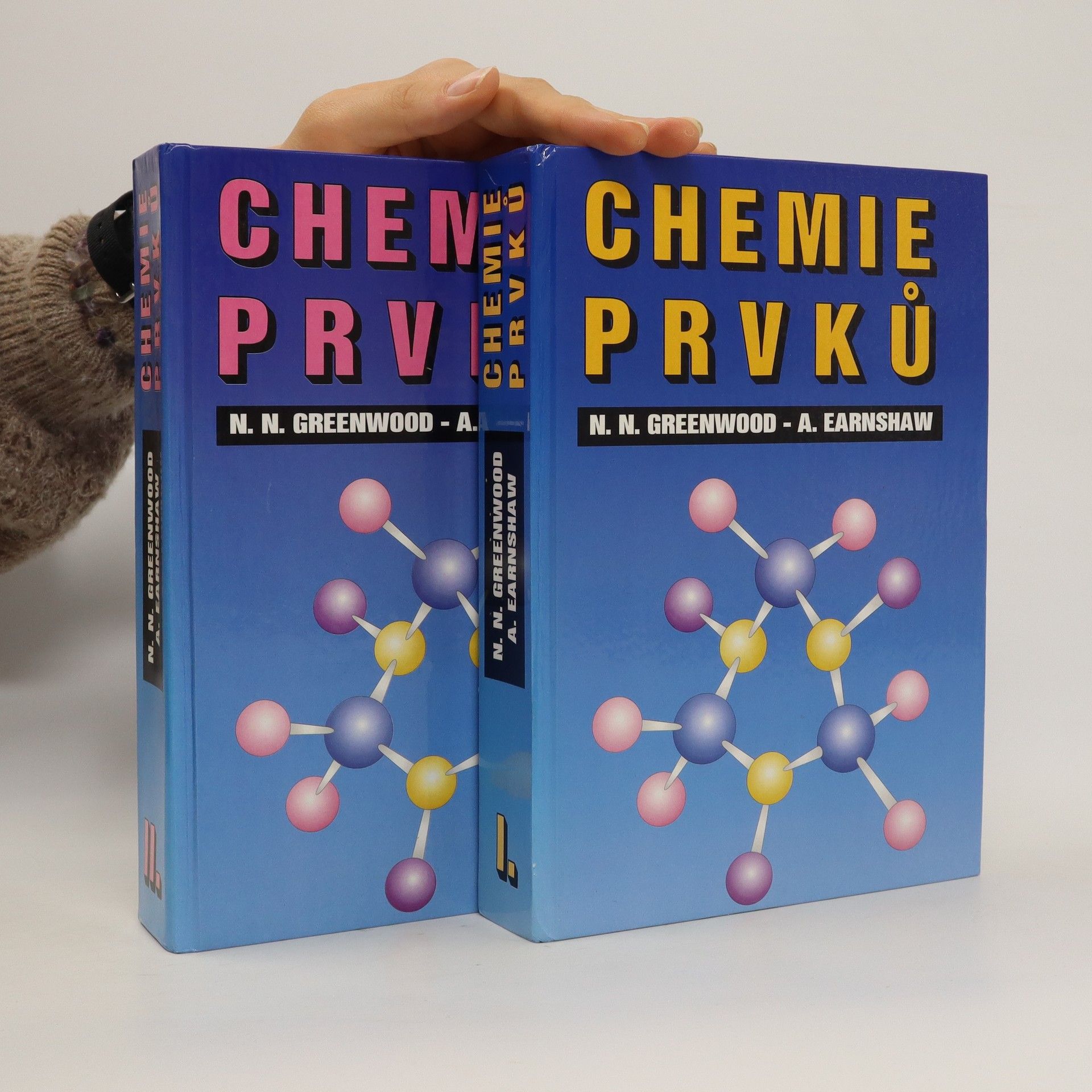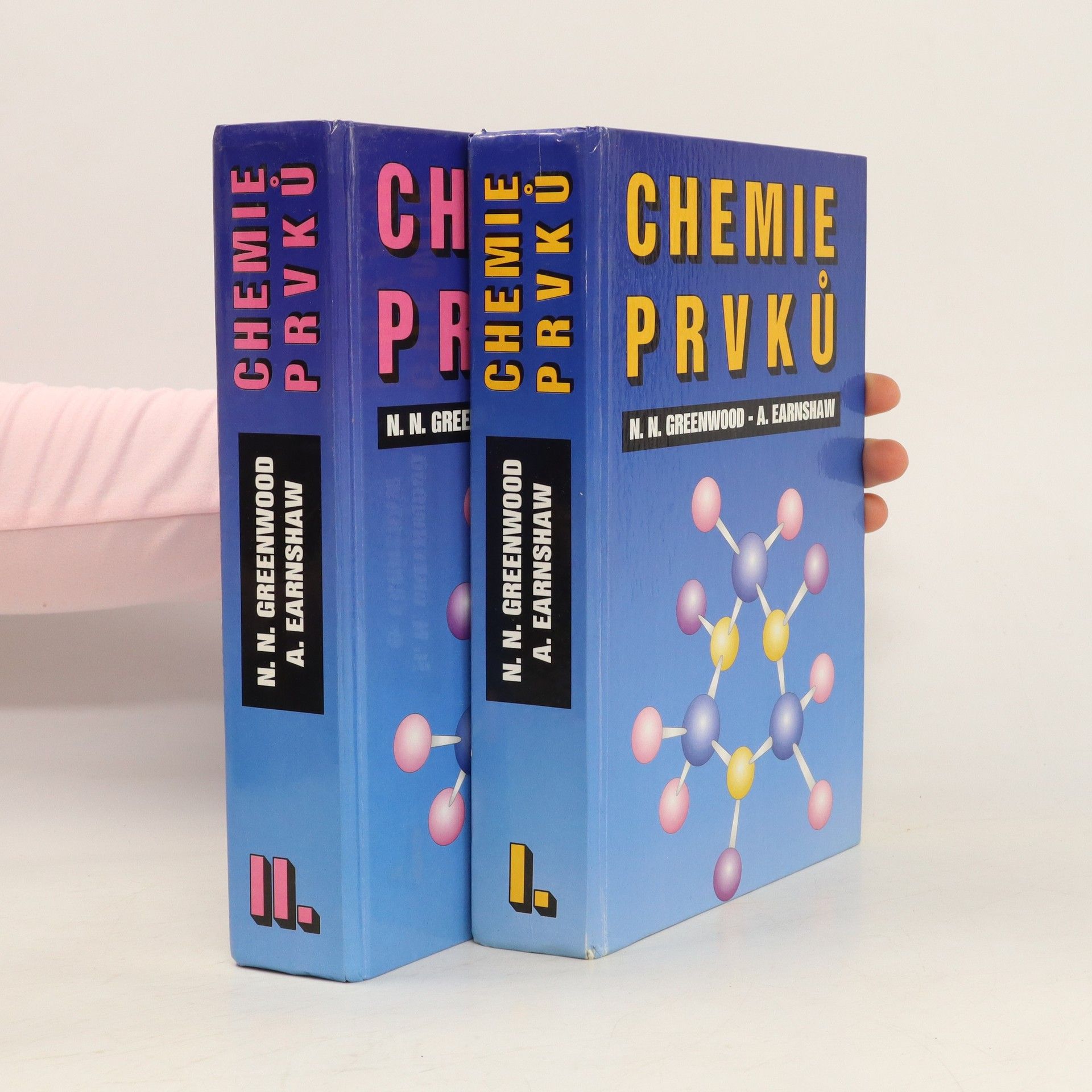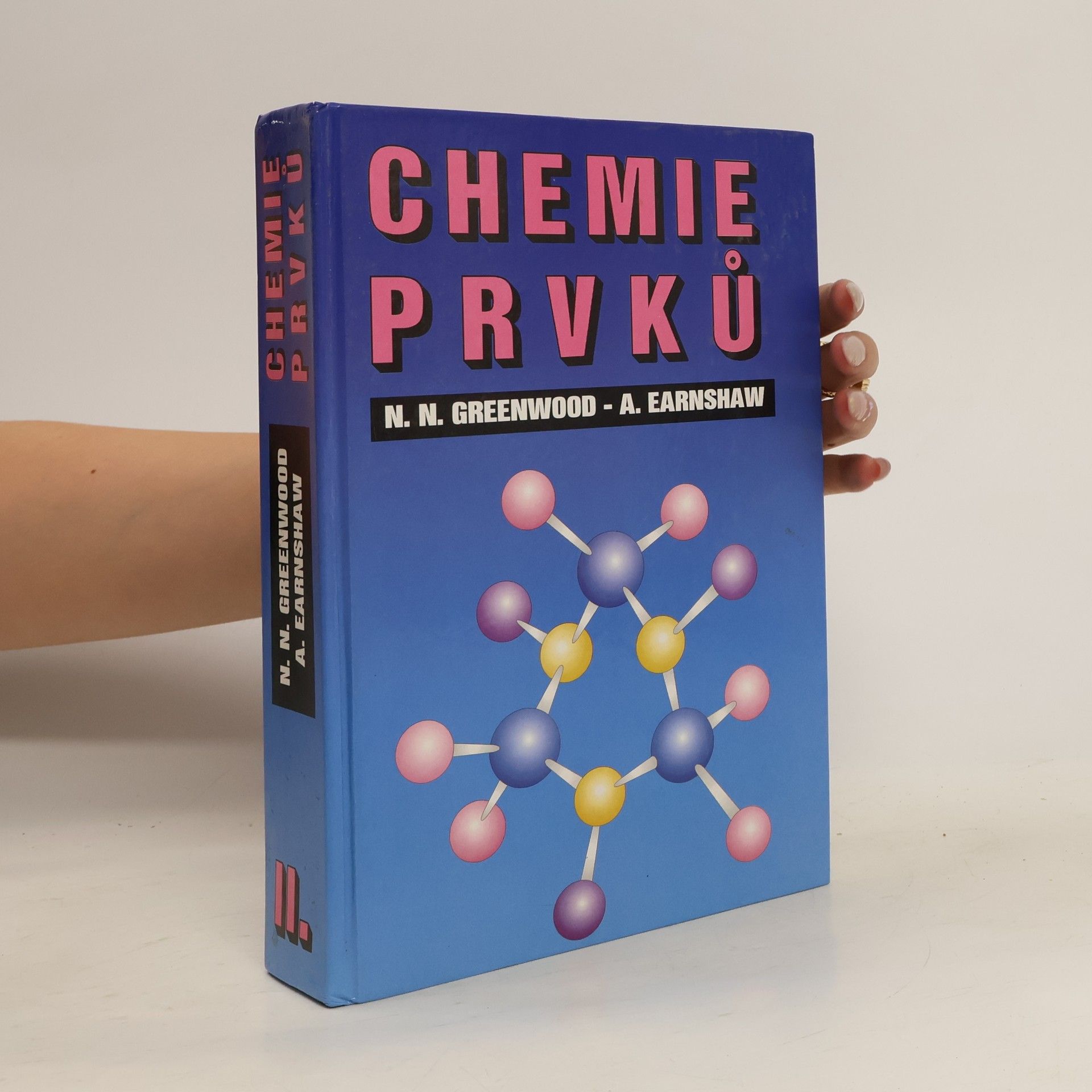Kniha podává zcela nový, vyvážený, souvislý a především ucelený pohled na chemii prvků a vedle "anorganické chemie" pokrývá také analytiku, technologii, chemii organokovových a komplexních sloučenin, bioanorganickou chemii a další oblasti chemie. Chemie prvků je diskutována v kontextu s teoretickými základy, příčemž je v knize kladen důraz na chemickou stránku. Zařazením různých poznámek historického a speciálního charakteru se obohacuje čtenářův obzor, který ještě rozšiřují další údaje o roční produkci důležitých chemikálií a o jejich hlavním uplatnění. V našich poměrech bude kniha plnit spíše úlohu encyklopedie než učebnice, i když ji autoři jako učebnici napsali.
Alan Earnshaw Knihy






Kniha podává zcela nový, vyvážený, souvislý a především ucelený pohled na chemii prvků a vedle "anorganické chemie" pokrývá také analytiku, technologii, chemii organokovových a komplexních sloučenin, bioanorganickou chemii a další oblasti chemie. Chemie prvků je diskutována v kontextu s teoretickými základy, příčemž je v knize kladen důraz na chemickou stránku. Zařazením různých poznámek historického a speciálního charakteru se obohacuje čtenářův obzor, který ještě rozšiřují další údaje o roční produkci důležitých chemikálií a o jejich hlavním uplatnění. V našich poměrech bude kniha plnit spíše úlohu encyklopedie než učebnice, i když ji autoři jako učebnici napsali.
Kniha podává zcela nový, vyvážený, souvislý a především ucelený pohled na chemii prvků a vedle "anorganické chemie" pokrývá také analytiku, technologii, chemii organokovových a komplexních sloučenin, bioanorganickou chemii a další oblasti chemie. Chemie prvků je diskutována v kontextu s teoretickými základy, příčemž je v knize kladen důraz na chemickou stránku. Zařazením různých poznámek historického a speciálního charakteru se obohacuje čtenářův obzor, který ještě rozšiřují další údaje o roční produkci důležitých chemikálií a o jejich hlavním uplatnění. V našich poměrech bude kniha plnit spíše úlohu encyklopedie než učebnice, i když ji autoři jako učebnici napsali.
Chemie prvků I. a II. díl
- 2 zväzky
LMS Railway Road Vehicles
- 48 stránok
- 2 hodiny čítania
The LMS was a major pioneer in the development of commercial road vehicles. This is an illustrated history of the vehicles operated by the LMS and its predecessors from 1923 to 1947. It also includes LMS horse drawn vehicles and the LMS buses of the period.
This book provides a comprehensive overview of the chemistry of the elements for undergraduate and postgraduate students, covering inorganic chemistry and related fields like analytical, theoretical, industrial, organometallic, and bio-inorganic chemistry, all within a theoretical framework.
Vauxhall Cars 1945-1964 narrates the remarkable story of Vauxhall Motors post-war years. Originally manufacturers of marine engines, the Vauxhall Iron Works were established on the South bank of the River Thames in 1867 and after troubled times at the end of the 19th-century, the firm commenced motor manufacturing in 1903. This was to be the start of the company’s phenomenal success story, which was to expand rapidly two years later when the company moved to a new purpose-built factory at Luton in Bedfordshire. In the two decades after World War II, as Britain began to rebuild itself, Vauxhall made some of their most classic models. By introducing the L-Type, E-Type, PA-Type, and HA Viva through to the FB Victor and PC Cresta, Vauxhall established itself as one of the world’s most respected car manufacturers.
Everybody likes ice-cream, and there can be few names as big as Wall's in the European ice-cream industry. Now, part of the giant Unilever Ice Cream and Frozen Foods division, the Wall's brand is instantly recognised as a market leader. A position it has held since its venture into the frozen confectionary business as a seasonal diversification to its core business, cooked meats, sausages and pies in the early 1920s. In this book, Alan Earnshaw, David Hayward and Chris Stevens chart the company's reasons for diversification, and the way they began distributing their products. The story continues after the war, when to get around rationing and other regulations, Wall's sold their products under the slogan Omore than a treat a food'. In the post-war period, the firm could sell more ice cream than it could produce, and this continued down to the late-1950s, when the Osoft ice-cream' craze swept in from the USA, with Mister Softee and Mr.Whippy vans taking to the streets of Britain. So dangerous was this threat to Wall's and Lyons Maid, the other main producers, that the two new brands were acquired, so Wall's bought out Mr.Whippy. By the mid-1970s the sales of ice-cream products in supermarkets and home freezer-ownership had radically altered the Omobiling' market, and since then there has been a progressive decline in the number of ice-cream vans patrolling our streets.